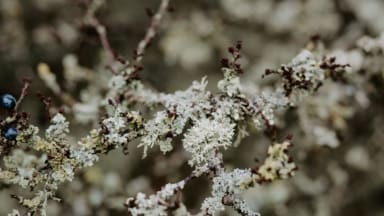
Though so often unnoticed, (common) lichens are everywhere but remain one of the least understood organisms. Lichens can indicate air pollution levels, are used by birds to build nests, feed and shelter insects and are even used in medicine. According to Plantlife, they are a vital part of our ecosystems and play crucial roles in environmental health but due to pollution, habitat loss, tree disease and climate change their survival is threatened. The conservation charity started the campaign late November, to make headway into preserving and protecting these remarkable organisms.
Lichens have an uncanny ability to grow on any substrate. They don’t have roots and don’t require constant hydration, allowing them to inhabit most habitats and geographic areas. According to the charity, it’s estimated that 7% of the earth’s surface is covered with lichens. Similar to plants, lichens photosynthesise. More specifically, the algae in the lichen produce carbohydrates and the fungi take those carbohydrates to grow and reproduce.
The funds generated through the “Shine a light Campaign” will be used to train and inspire land managers and enthusiasts to better understand lichens and give them practical skills to improve habitat management, map and research lichens to improve understanding. The charity will also work with key decision-makers on policies to protect and restore rainforests – home to rarer lichens, while reducing the threat from air pollution. Furthermore, Plantlife will advise on managing trees with ash dieback to help conserve their lichens and translocate rare species.
For their campaign, Ian Dunn, Plantlife CEO said: “The UK has a remarkable array of globally important lichens and it is sad to say we’re losing many lichens due to nitrogen air pollution. Our appeal is raising vital funds to increase our understanding of lichens so please do support us in shining a light on this wonderful family of organisms”.
The charity is still taking donations for the campaign which will all go towards securing the future of these exceptional organisms.

